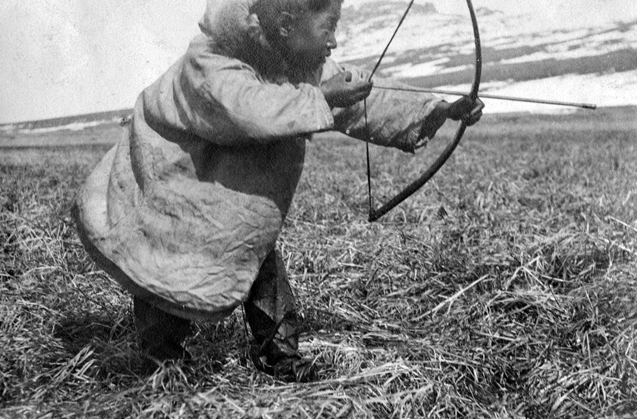
Boy hunting with bow and arrow, Alaska, 1901
Suzanne Bernardi photo album; Lois Minium Collection, 89.5.15

Boy hunting with bow and arrow, Alaska, 1901
Suzanne Bernardi photo album; Lois Minium Collection, 89.5.15
Many people in New Mexico have seen stone arrow points, but what about the bows and arrows that went with those points? By looking at examples from dry caves, where wood and other organic materials were preserved, we can reconstruct the entire "weapon system." Let's begin with two fairly typical examples of prehistoric arrows from the U.S. Southwest.
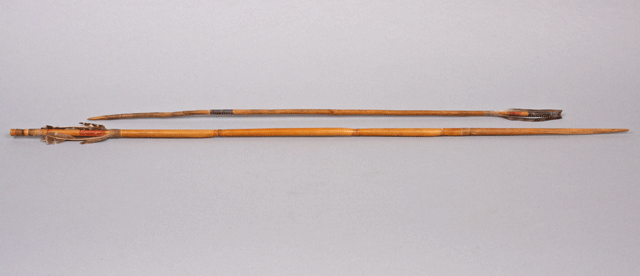
Two arrows; reeds, wood, feathers, sinew, paint
Upper: 65.24.277b, probably Chihuahuan Desert;
North-Alves Collection
Lower: 64.54.27, Cravens Cave, Arizona; Mogollon culture (A.D.
200–1450);
Field collection by Florence Hawley Ellis
Photograph by B. Bernard
Both arrows have shafts made from reeds, which are light and straight. The next photograph shows the foreshafts, which were made of hardwood to keep the arrow from splintering upon impact. The foreshafts are bound in place with sinew.
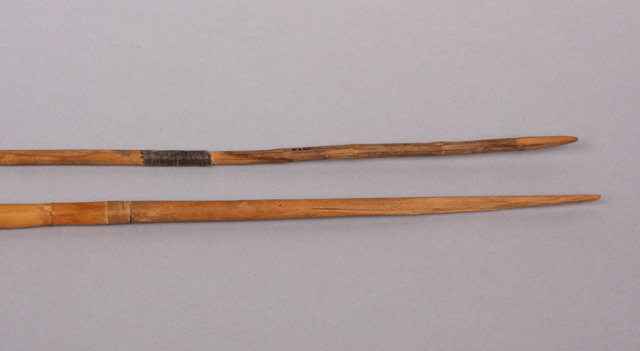
Foreshafts of 65.24.277b (upper), 64.54.27 (lower)
Photograph by B. Bernard
While people (including archaeologists) often assume that prehistoric arrows always had stone points, these two examples have sharpened foreshafts. When arrows are preserved, pointed hardwood foreshafts are surprisingly common. We don't know why stone points were used in some instances but not in others. The next two photographs show the other end of a prehistoric arrow.
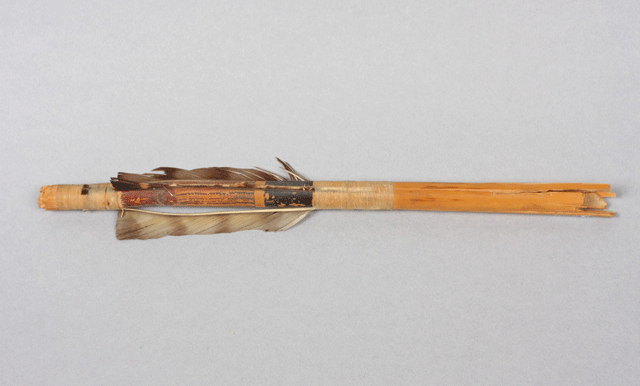
64.54.55, arrow shaft fragment; reed, wood, feathers, sinew, paint
Cravens Cave, Arizona; Mogollon culture (A.D. 200–1450)
Field collection by Florence Hawley Ellis
Photograph by B. Bernard
Here we see the nock end of the arrow. The end is "nocked" (notched) to take a bowstring. The fletching consists of split feathers held in place by sinew. Where the shaft has broken, we can see the hollow structure provided by the reed. Finally, the arrow was carefully painted. A second picture, below, shows a closer view of these details. The final photograph shows the nock ends of the two whole arrows; while one has split-feather fletching, the other utilizes unsplit feathers.

Closer view of 64.54.55, arrow shaft fragment
Photograph by B. Bernard
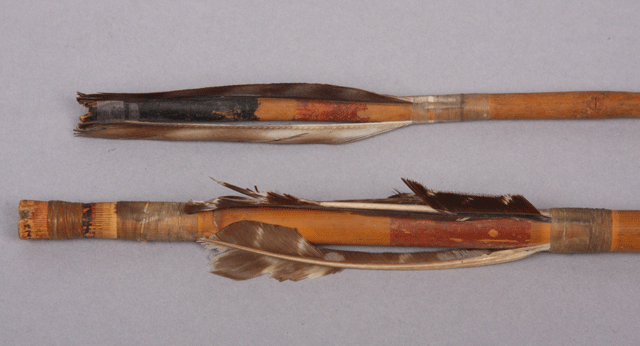
Nock ends of 65.24.277b (upper), 64.54.27 (lower)
Photograph by B. Bernard
The next two photographs show a prehistoric bow fragment. At first
glance it doesn't look like much, but the unbroken end is tapered
(as the second photograph shows). A branch of the right wood,
tapered at both ends (which can be done with a stone scraper),
is enough to propel an arrow at deadly speed.

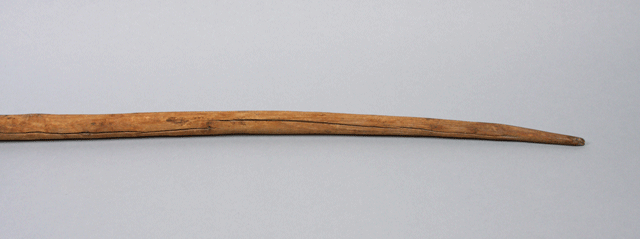
37.3.19, bow fragment of wood
Found north of Silver City, N.M.; Mogollon Culture, Ca. A.D. 1000-1450
Field collection by Frank Hibben
To return to the "bows and arrows" thumbnail on the Tools page, please click here. To return to the page on fending (?) sticks, please click here.
All content copyright © Maxwell Museum of Anthropology, University of New Mexico. A high-resolution verson of this photograph may be ordered from the Maxwell Museum's photo archives. Please make note of the catalogue number. For more information please visit the photo archives web page
Page last revised on March 11, 2011. Please report problems to toh@unm.edu